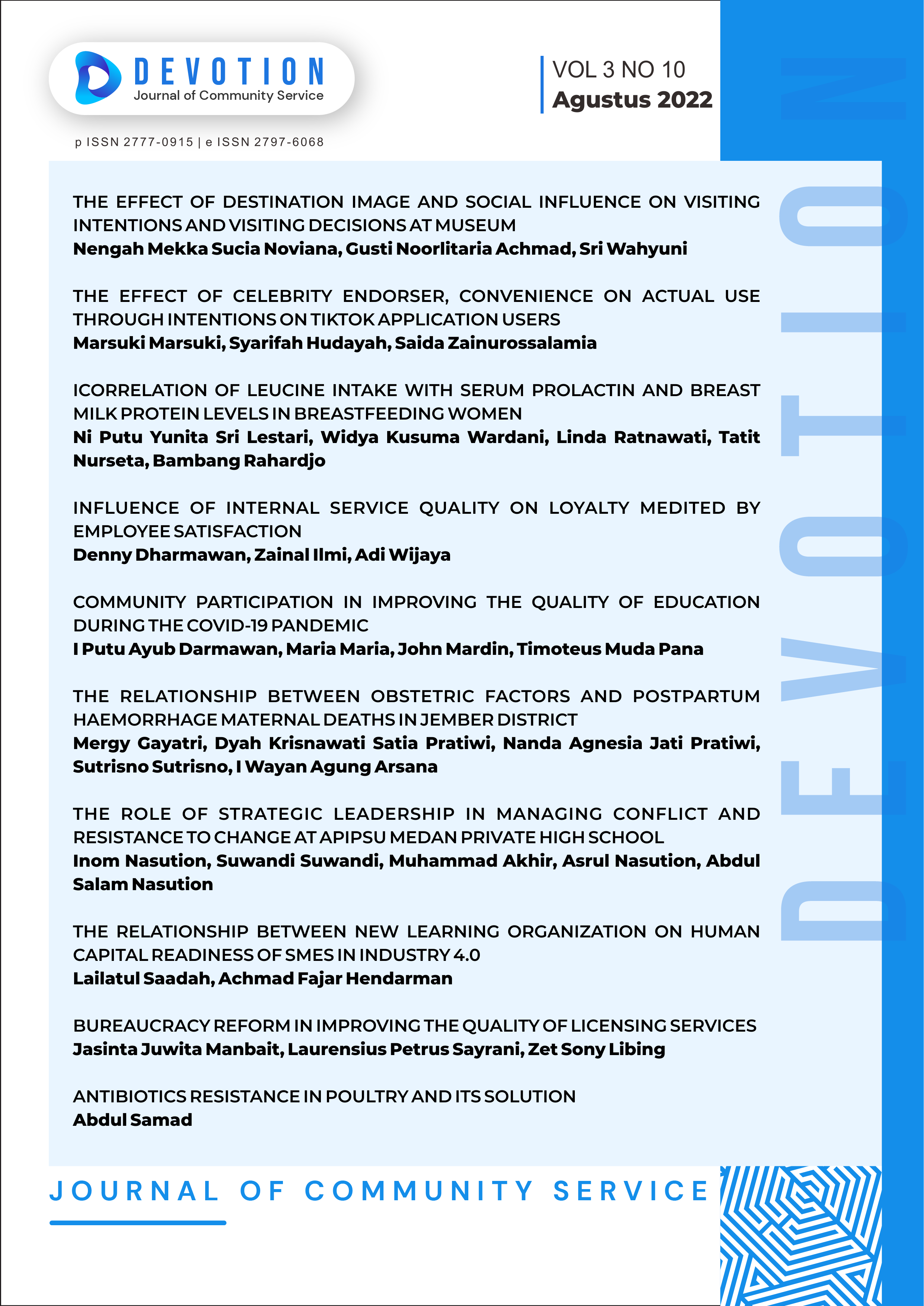The Relationship Between Obstetric Factors and Postpartum Haemorrhage Maternal Deaths in Jember District
DOI:
https://doi.org/10.36418/dev.v3i10.200Keywords:
Haemoglobin Level, Retained Placenta, Uterine Atony, Perineal Tear, Postpartum Haemorrhage, Maternal MortalityAbstract
Maternal mortality remains public health issue. One of its leading causes is postpartum haemorrhage. The aim of this study is to test the relationship between haemoglobin levels, perineal tear, retained placenta, uterine atony, and maternal mortality from postpartum haemorrhage in Jember district, Indonesia. This case-control study comprised 43 mothers died from postpartum haemorrhage (cases), and 43 mothers survived from postpartum haemorrhage (controls) between from January 2017 and December 2019. Data were obtained from maternal verbal autopsies, complemented by birth registrations and medical records in 26 community health centres across Jember district. The chi-square, and multivariate logistic regression were administered to test the hypothesis. The results of this study indicate that Haemoglobin levels (p = 0.032, OR 6.372, 95% CI 1.172 - 34.626), retained placenta (p = 0.033, OR 4.578 95% CI 1.128 – 18.587), and atonia utery (p= 0.014, OR 4.578 95% 1.364 – 16.502) had significant relationship with maternal deaths from postpartum haemorrhage. However, perineal tear (p= 0.155, OR 0.347 95% 0.081 – 1.490) had no significant relationship with maternal deaths from postpartum haemorrhage. The conclusion in this study is Identifying obstetric factors are important. Therefore, conducting early detection screening during pregnancy is encouraged to reduce postpartum haemorrhage maternal death.
Published
Issue
Section
License
Copyright (c) 2022 Devotion: Journal of Research and Community Service

This work is licensed under a Creative Commons Attribution-ShareAlike 4.0 International License.
Authors who publish with this journal agree to the following terms:
- Authors retain copyright and grant the journal right of first publication with the work simultaneously licensed under a Creative Commons Attribution-ShareAlike 4.0 International. that allows others to share the work with an acknowledgement of the work's authorship and initial publication in this journal.
- Authors are able to enter into separate, additional contractual arrangements for the non-exclusive distribution of the journal's published version of the work (e.g., post it to an institutional repository or publish it in a book), with an acknowledgement of its initial publication in this journal.
- Authors are permitted and encouraged to post their work online (e.g., in institutional repositories or on their website) prior to and during the submission process, as it can lead to productive exchanges, as well as earlier and greater citation of published work.













